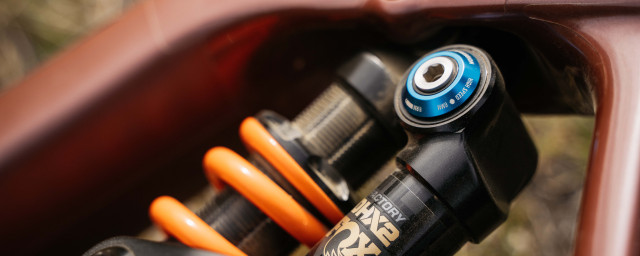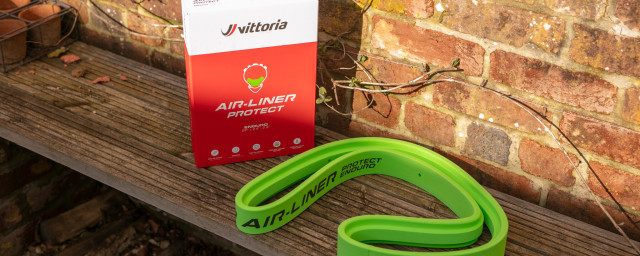Busting those suspension myths with Fox

Your bike's suspension is a pretty complicated bit of kit and with that, there are many methods of setting it up and caring for it being spread around all corners of the internet. However, a few of them fall into the category of total mythology and will leave you treating some of the most expensive stuff on your bike poorly, or riding with a less than ideal setup. We've teamed up with Fox UK to bust some of those myths.
- Talking Tech: Liam's tech predictions for 2022 - What new kit might we see this year?
- We talk with Starling Cycles about thermoplastic carbon
- We talk DATUM tech with DIGIT BIKES' Tim Lane
Prying open your fork seals and dripping lube underneath is good maintenance
While lubricating your fork’s seals is good practice and a heavily recommended bit of preventative maintenance, shoving stuff down your fork seals to make a bit of space to drip lube underneath them isn't the best of ideas. That's because it can introduce dirt into the sealed system and worse, it could scratch your stanchion.
Instead, Fox recommends that you remove the fork lowers with the bike upside down (which will keep the bath oil within the system unless to knock the bike over) and give the seals a good wipe with a clean cloth from there. Of course, this should be done with a clean bike to avoid contaminating anything.
Winding more preload onto coil suspension will help achieve proper sag if my spring isn't the correct weight
This is one of the unfortunate downsides of coil suspension. The weight of spring you’ve installed solely dictates sag. If you’ve bought the wrong weight and you're not reaching ideal sag, you’ll need to buy a whole new spring. Winding loads of preload onto a spring will only negatively affect the suspension by causing the spring to bind, harshly restricting the travel on offer. Too much preload will also stop the shock from being able to deliver that small bump sensitivity that's inherent with coil suspension.
Fox says that once the preload collar is touching the spring, the most preload you should ever put the spring under is two full rotations of the collar. Any more and you should look to buy a heavier spring. To find out which weight works for you, head over the ridefox website (link is external) and bung your details into the spring calculator.
A neat tip from Fox is to paint a blob of Tippex onto the preload collar so you can gauge how many winds of preload you've turned.
You just need to pump air into your suspension and it’s ready to go
Well… Yes and no on this one. You do need to inflate your air suspension, of course but just filling an empty air chamber and being done with it ignores the negative air chamber. As you inflate your suspension, give it a bit of a squish a couple of times to fill and balance that negative air chamber. That way, you won’t find yourself riding with improper sag and have to go back to top the pressure up.
Positive and negative air chambers work in tandem to achieve lovely feeling suspension. When you pump air into your fork, you’re first inflating the positive air chamber. As your fork moves through its travel, the air piston moves over a little indent on the inside of the stanchion that lets air pass to fill the negative chamber. If you’ve filled your fork (for example) without compressing the suspension once or twice, both chambers won't be balanced as the air piston hasn't yet passed over that indent. The chambers will then balance as you ride and you'll lose the correct sag. This is the same for air shocks too.
off.road.cc on WhatsApp
All the latest offroad cycling news, tech and buying advice straight to your phone.Follow our WhatsApp channel here
My shock pump is broken or my suspension is leaking air!
If you’ve not had your suspension serviced for a long time, this may certainly be the case but what’s often overlooked is that your shock pump naturally releases some pressure from your suspension as you screw it on. This is due to the fact that air from your suspension fills the pump's hose in order for it to make its reading.
A good workaround is to figure out how much pressure your shock pump soaks up when in use. So for example, inflate your suspension to 90psi, remove and replace your shock pump and if the pressure has gone down to 85psi, inflate to 95psi to compensate for the 5psi loss. After that, your suspension will sit steadily at 90psi.
If you're losing more pressure than you've come to find is lost through your shock pump, then it may be time to book a service.
You must run your suspension as per the manufacturers recommendations
While the manufacturer's recommended settings are a fantastic place to start, everyone likes their suspension feeling differently. Use the recommended settings as a base, then experiment to find what you like the best. Though be sure to keep note of those settings and make small but gradual changes to stop yourself from getting lost within those clicks.
It's important to bear in mind that there are parameters that are important not to exceed for the safety of that expensive kit, and yourself.
You need to achieve full travel regularly
It's always good to know that you're making full use of the suspension travel on offer but it's wise to leave a little bit in reserve for when things get especially hairy.
For example, a lot of your riding could include lovely, flowy trails and of course, you'll have your suspension set up for just that, taking advantage of every millimeter of squish. Though, once you're met with a spicy rock garden or some kind of tech, you'll quickly be bottoming out and lacking much-needed support. That doesn't feel very nice...
It never hurts to throw in a volume spacer (assuming you've got your sag set up) to keep 10 - 15mm of travel in reserve.
Riding a descent with my suspension locked out will damage it
We've all been there, mid-descent after a monster climb to find that the bike is feeling atrocious because we've forgotten to open up our suspension to make it nice and squishy. Then we only cringe at the thought of any damage that's occurred during that mega rough bit of down.
Thankfully, our man at Fox says that any damage is unlikely and that in his 12 years of experience, he's never seen any suspension that's been wrecked through lock-out based forgetfulness. However, as with anything, there are limits... Don't go sending those 10m huck to flats with locked-out bouncers.
You need a spray lubricant or silicone spray to clean around the seals
Not necessarily. Products such as Juice Lubes' Fork Juice and Muc-Off's Silicone spray can help shift gunk from around your fork seals and make the initial stroke feel nice and smooth before riding but they're not vital to keep those areas clean.
Instead, simply use mild soap and water to clean your suspension after every ride, as recommended by Fox. Then use a dry cloth that hasn't been contaminated with any oils to dry those sensitive areas off. This is especially important when running a mudguard that catches dirt around the seals.













